Thermoplastics Home
Structural Thermoplastics & Smart Materials
Developing the next generation of environmentally sustainable structural thermoplastic
composites that save energy, reduce waste, and allow for making parts faster, cheaper, and more reliably.
Thermoplastic Composites and Thermoset Composites: What’s the Difference?
Thermoplastic Composites
Thermoplastics are recyclable and can be melted down and remade into a new product. Upon heating, plastic polymer thermoplastics soften to be shaped and hardened when cooled. With fiber reinforcement, thermoplastics have the same strength properties as steel, but are 1/4 of the weight, making it a cost-saving and sustainable solution. Increasing the market prevalence, sustainability and product consistency of thermoplastics is a focus of ASCC researchers. Using 3D printed thermoplastic molds, we form long-fiber reinforced thermoplastic composites created from a tape layup process.
Thermoset Composites
Unlike thermoplastics, thermosets cannot be melted down and reused. Traditional thermoset manufacturing techniques use resins like polyester, silicone, melamine, polyurethane, epoxy, urea-formaldehyde; and they contain volatile organic compounds (VOCs). The ASCC has committed to R&D work toward substituting these materials with 100% bio-based thermoplastics that are recyclable, cost-effective, and sustainable.
Alfond Advanced Manufacturing Lab for Structural Thermoplastics
The mission of this lab is to increase the market prevalence of structural thermoplastics through the demonstration of automated, advanced manufacturing techniques.
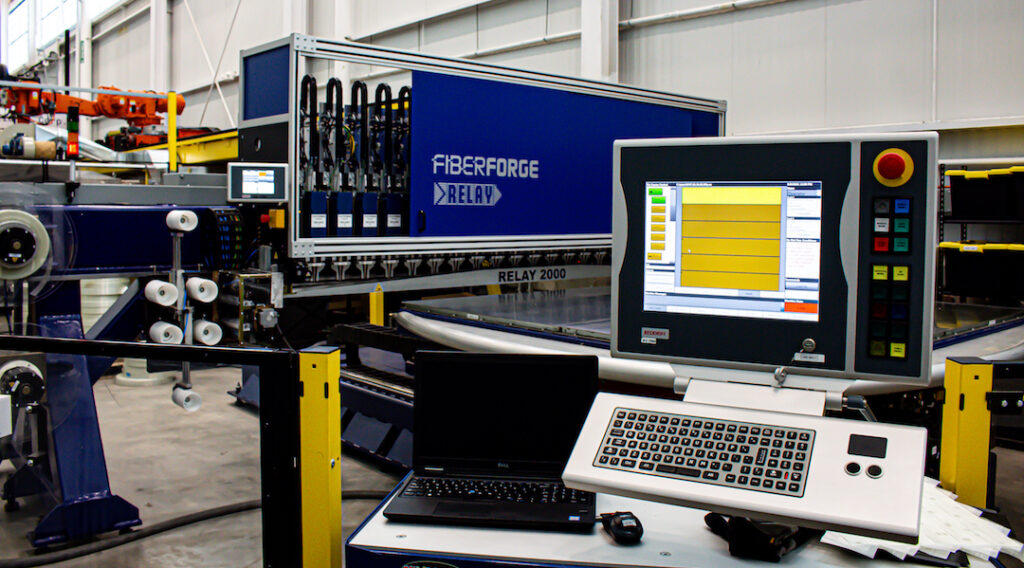
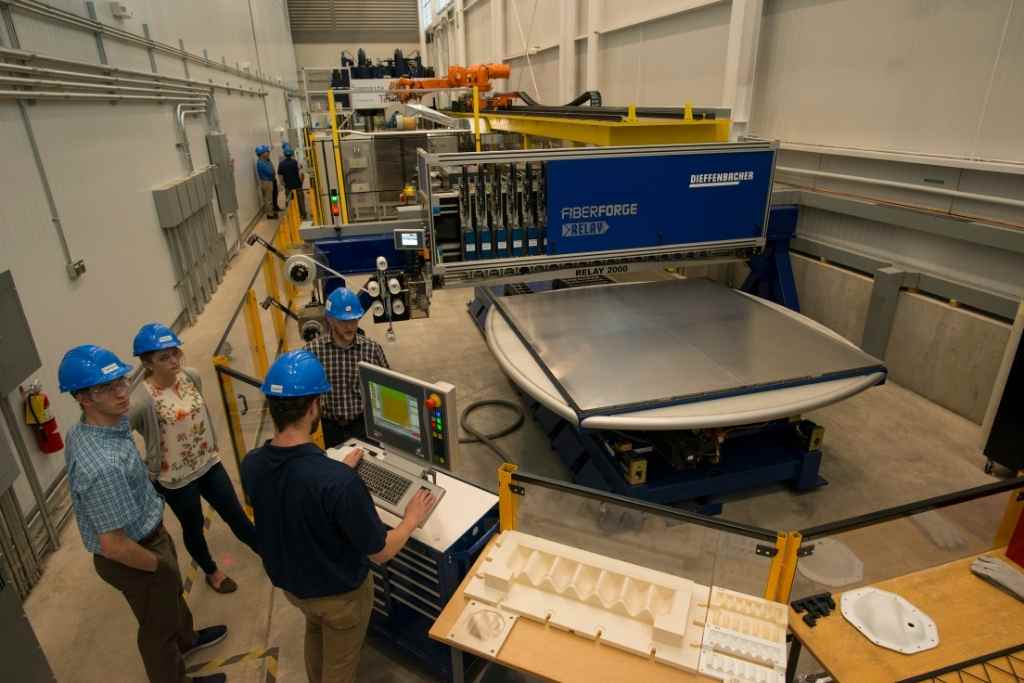
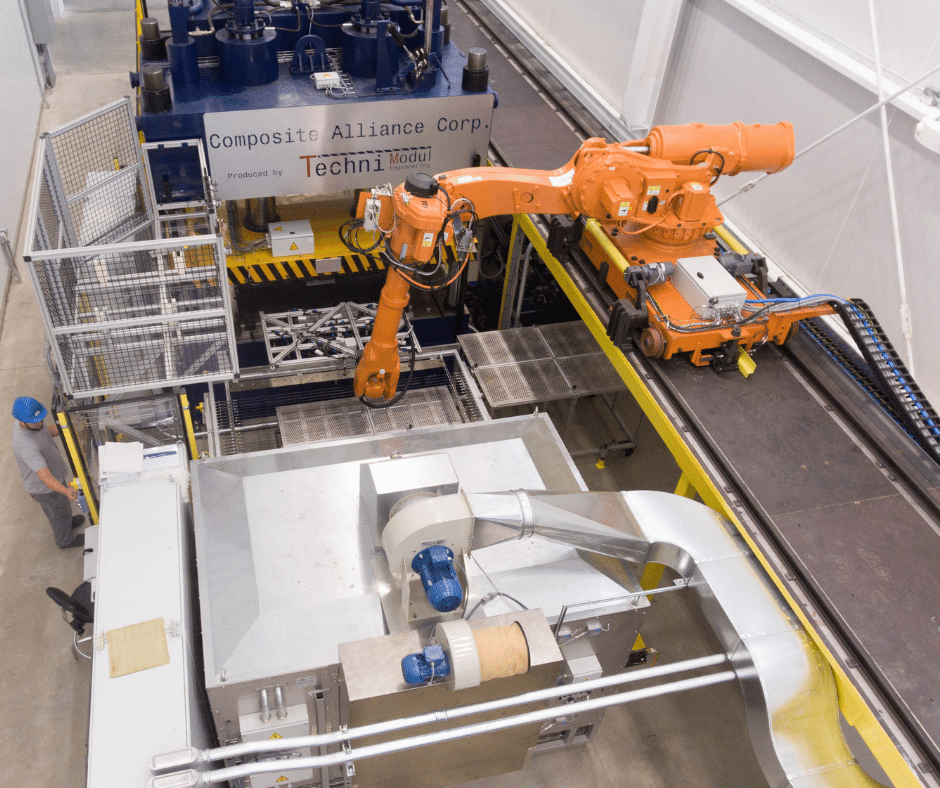
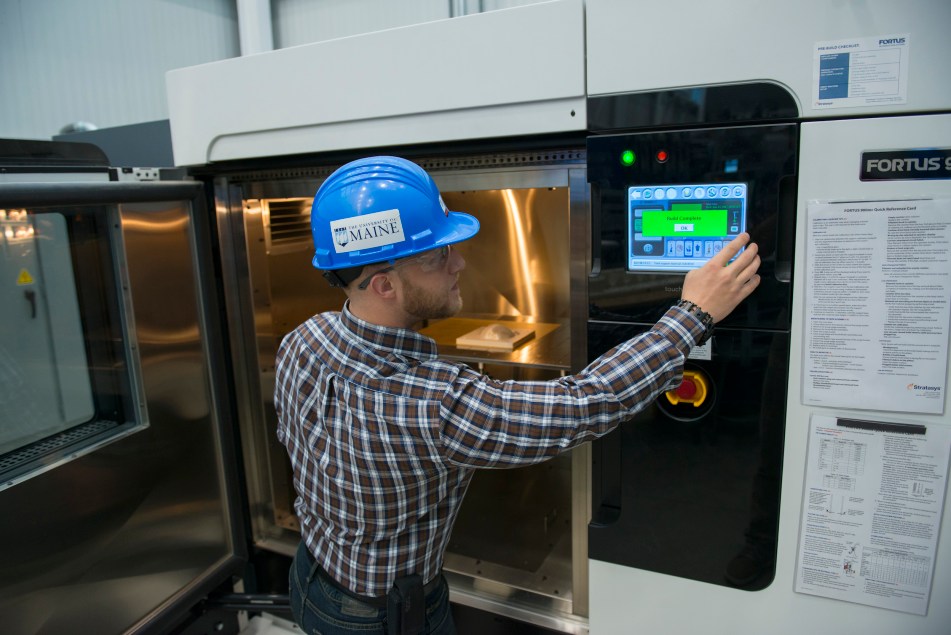

David
Erb
R&D Program Manager

Dr. Roberto Lopez-Anido, P.E.
Malcolm G. Long Professor of Civil & Environmental Engineering

Jonathan Roy
Structural Thermoplastics Research Engineer

David Erb
R&D Program Manager
Contact Structural Thermoplastics & Smart Materials
Research Overview
The Alfond Advanced Manufacturing Lab for Structural Thermoplastics was developed in 2015 to facilitate research in long-fiber reinforced thermoplastic composites. We are discovering mechanical properties, studying viscoelastic behavior during heating and forming, and performing computer-simulated modeling techniques for fiber-reinforced composite materials.
The lab utilizes a process called tape layup, in which spools of pre-impregnated thermoplastic tapes are cut to length, orientated, and ultrasonically welded on a 2-axis motion table. The table’s ability to both translate and rotate allows tailored blanks to be engineered for specific material properties. This process minimizes waste while decreasing both the time and cost of developing high-strength structural composite components. The tailored blanks are then heated and formed in a 700 ton, fast reaction manufacturing press.
The lab also devotes a large effort to the development of 3D printed thermoplastic molds using a Fortus 900mc 3D printer which allows additive manufacturing of parts up to 36” x 24” x 36”. The Fortus 900mc is capable of using more than 13 different thermoplastic filaments including high-performance thermoplastic polymers such as ULTEM 9085, ULTEM 1010, (PEI blends), or polyethersulfone (PPSF/PPSU) at temperatures as high as 400°C.
These high-performance polymers provide enough thermal stability for the production of thermoplastic molds used in forming lower-temperature composite materials. The concept uses these high-temperature molds for thermoforming reinforced composites made from lower-temperature thermoplastics that have been pre-processed from tailored blanks. The blanks are later placed in a hydraulic press for thermoforming.
Featured Research
Lightweighting Military Ground Vehicles
A partnership with the ASCC and US Army DEVCOM Ground Vehicle System Center was formed to develop technology to reduce the weight of military ground vehicles with fiber-reinforced thermoplastic materials that reduce cost, maintain structural integrity and allow for rapid deployment.

AM ABS/Sheet metal Clad, Compression Mold Set
Composite-Concrete Beam
This is a technology that uses hybrid thermoplastics in which the bean is outfitted with welded shear studs. This research was commissioned by the Engineering Research and Development Center (ERDC) of the U.S. Army Corps of Engineers for the development of a stiffened panel system for use in load-bearing hybrid composite-concrete structures.
Project Objectives
The initial phase of this project was a literature review of thermoplastics and their variety of advantages in structural applications including recyclability, corrosion resistance, amenability to rapid manufacturing, impact resistance, and high strength-to-weight ratio. The next phase was the material characterization of two thermoplastic materials to build a basis for material selection for component-level specimens.
Characterization was done with two thermoplastic materials: Elium acrylic, a two-part liquid thermoplastic resin, and polyethylene terephthalate glycol (PETg) prepreg tapes. Both materials are used with E-glass reinforcing fibers. Elium composites are fabricated in a vacuum infusion process similar to what is traditionally done with thermosets, whereas PETg composites, in this study, are formed through heated consolidation of prepreg tapes.
The initial component-level specimens will be hybrid composite-concrete beams as shown in Figure 1. The thermoplastic composite reinforcement in the initial design is PETg reinforced with E-glass fibers, which is used as tensile reinforcement in the beam. Shear is mechanically transferred between the composite and the concrete by thermoplastic shear studs with a T-hat shape. The studs are bonded to the beam by spin-welding (friction welding). The use of thermoplastics in both the tensile reinforcement and the shear studs allows utilization of the formability of the material, which is not possible with thermosets. The initial test of this application will be conducted on 5-ft long beams of the style shown in Figure 1, which will be tested in four-point bending.
Once the proof of concept is complete for this hybrid beam, more complex cross-sections will be investigated that take advantage of the ability to thermoform thermoplastic plates. Figure 2 shows an initial shape that is being developed. Corrugations are added to increase the flexural stiffness and strength of the plate so it can withstand dead loads before the concrete has cured and serve as a stay-in-place form for the concrete. This process of using hybrid composite-concrete structures can be extended to other applications beyond beams such as bridge decking, retaining walls, and columns.

Figure 1. ERDC Hybrid Composite-Concrete Beam
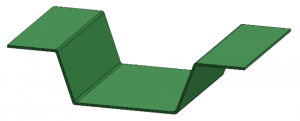
Figure 2: ERDC Corrugated Shape Concept Design
CAREER
OPPORTUNITIES
LEARN MORE ABOUT THE EXCITING OPPORTUNITIES AT THE ASCC
